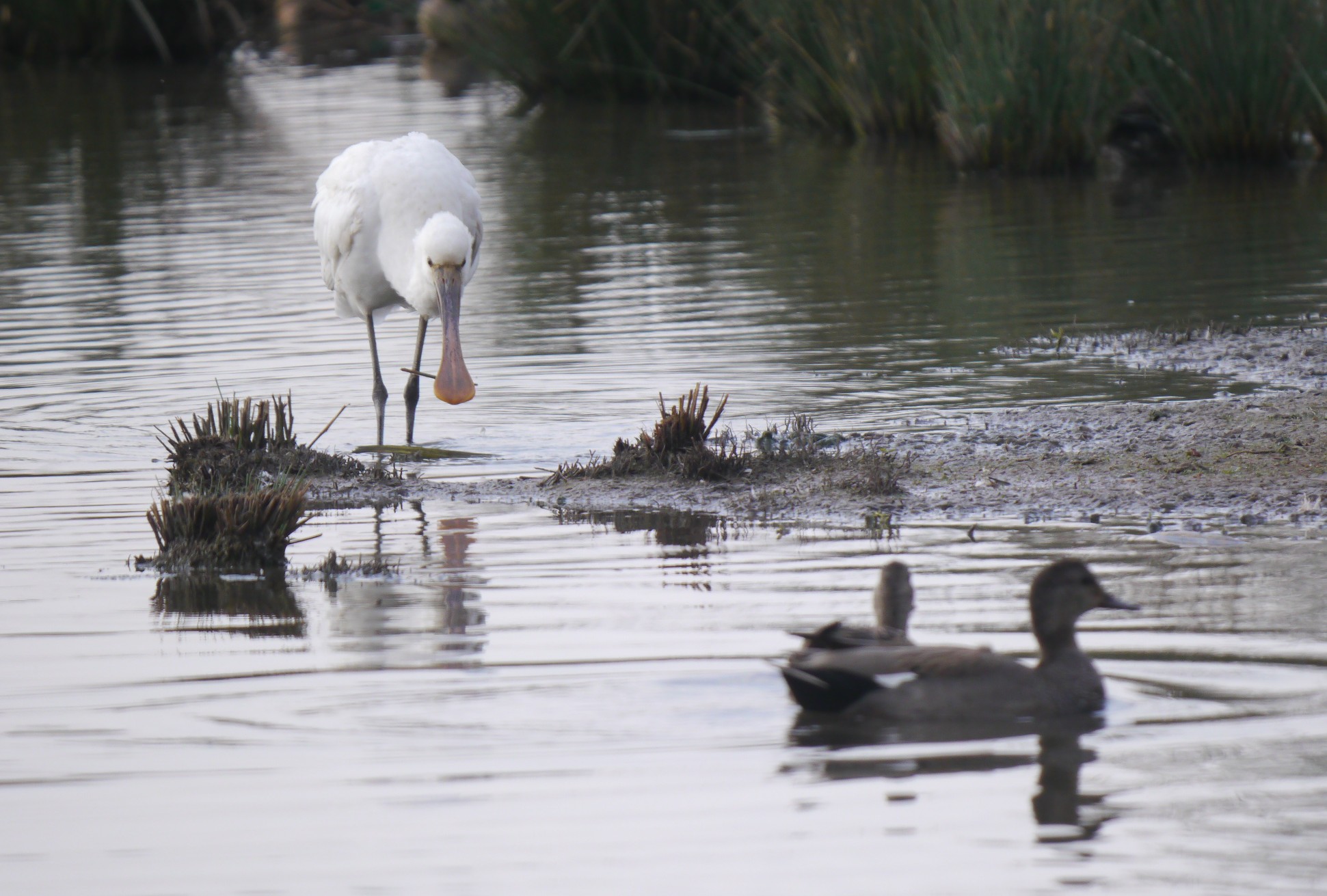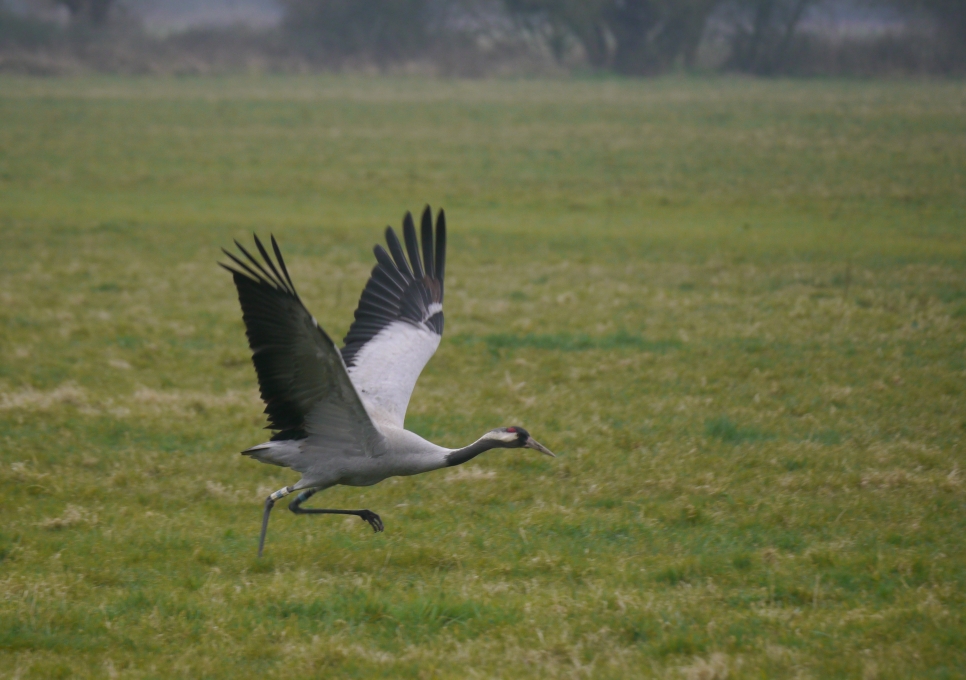Information if coming to look for the Bluethroat.
White-spotted Bluethroat Luscinia svecica cyanecula at Middle Point
WWT Slimbridge, New Grounds. 2024
A male W.s. Bluethroat returned to its territory in the foreshore reed beds at Middle Point, this marks the fourth season on territory with us, which is quite remarkable. Sadly, despite being a superb songster and sporting bedazzling plumage, this individual hasn’t, as yet, found a mate, once again we cross our fingers in hope that a female might be passing through and hear his song.
The white-spotted subspecies typically breeds on the near continent so this bird could be the harbinger of a northward range expansion, a response to a warming climate. This relative of the Robin sings intermittently from the reedbeds and new growth vegetation, the song drifts across from the estuary shore where it can be heard from the seawall bank, we have a Shepherds Hut hide in place that offers shelter, if it’s windy it can be helpful when trying to hear the song.
As the vegetation grows through May, denser cover will develop, this will embolden the bird to sing higher. It sometimes sings from a more readily viewable spot, especially if the weather is fine. It continues to sing on windy and wet days but can be much harder to spot later in the season it often chooses to sing from the specially placed perches within the reeds.
We have closed off sections of the path in previous years, this season access to the estuary edge is closed for now to allow the birds to establish territories and for the area to dry out following numerous tidal inundations. At some point we’ll work on maintaining the pathway and open the track fully.
Now is great time to try to see the bird, worth trying before the path is opened, the best method for seeing and hearing it, is to use the hide, either sitting inside or using it as a backdrop to avoid sky-lining on top of the sea wall. If the human form is silhouetted, it’s more likely to stay low and might not show.
However, it’s a popular bird and there isn’t always room for all, if this is the case, it’s best not to move around too much, just be still, be quiet, keep scanning and listen carefully. By talking in a whisper or low voice and turning camera shutters off you’ll have a much better chance of spotting it. It typically sings until July then is usually silent until late August to September. It has appeared again just before it departs, probably heading to the coastal or inland wetlands of the Iberian Peninsula or North Africa.
In 2023 the bird showed very well for a few weeks, we enjoyed almost daily sightings, at all times of the day, so far this year, it has generally remained low in vegetation and views have been brief, more akin to the 2021 and 2022 seasons but it has been showing and singing. On the very few dry warm days so far this spring it seems to concentrate on feeding, not surprising as it’s easier to find insects. It’s been a cold and wet spring so far in 2024.
Note that pedestrian access to the point will be reinstated at some point, when we open this section, we ask that users do not linger in one spot favoured by the bird, by following these rules it works well for the bird and watchers. It can also be spotted along the fence lines, the ‘placed’ hazel stick perches are typically used so keep checking them, you may also see it perform a short display flight. When it isn’t on view it’ll be resting or feeding along the foreshore and out of view, it can take a day or more off.
Be aware that several other birds breed or visit the reed beds here, Reed and Sedge Warbler, Reed Bunting, Meadow Pipit are Skylark are all regularly present on territory. The scarcer Grasshopper Warbler also nests here.
Reserve staff must maintain the pathway during the open season, you may see some mowing or vegetation cutting, the birds here are used to this, it’s part of the annual management.
Please note that the seawall here is a main access point for the farmers and reserve staff, quad bikes, tractors and 4wd will all need to pass at times, the pathway up onto the seawall forms part of this access. When cattle are grazing on the Dumbles there will be a daily check of stock and fencing.
Booked birding and Wild safari groups will also be using this area and space during the season.
We ask that under no circumstances you use recordings of Bluethroat or for that matter any other species songs in this area, if you need to check or learn the call using your phone, please do so elsewhere, Bluethroat is a schedule one breeding species, protected under law.
The bird typically shows at around 100m but has shown to 20m and can be as far a 140m away from the viewpoint. It can show at any time of day but before midday is often better.
Early access opens at 08:15am for WWT members only (Boundless doesn’t apply to the early opening, apologies) entrance via the members gate which closes at 09:30am, please have your membership card available as you will be asked for it. The walk/roll from the car park is just over a km to the viewpoint. A wheelchair viewing area just short of a km also looks over Middle Point. The Summer Walkway closes at 4:30pm.
Non-WWT members (and Boundless Members) via the Admissions entrance at 09:30am.
Good luck if you are trying your luck at Bluethroat spotting the Spring and Summer.
Martin, Senior Reserve Warden.
May 2024.



